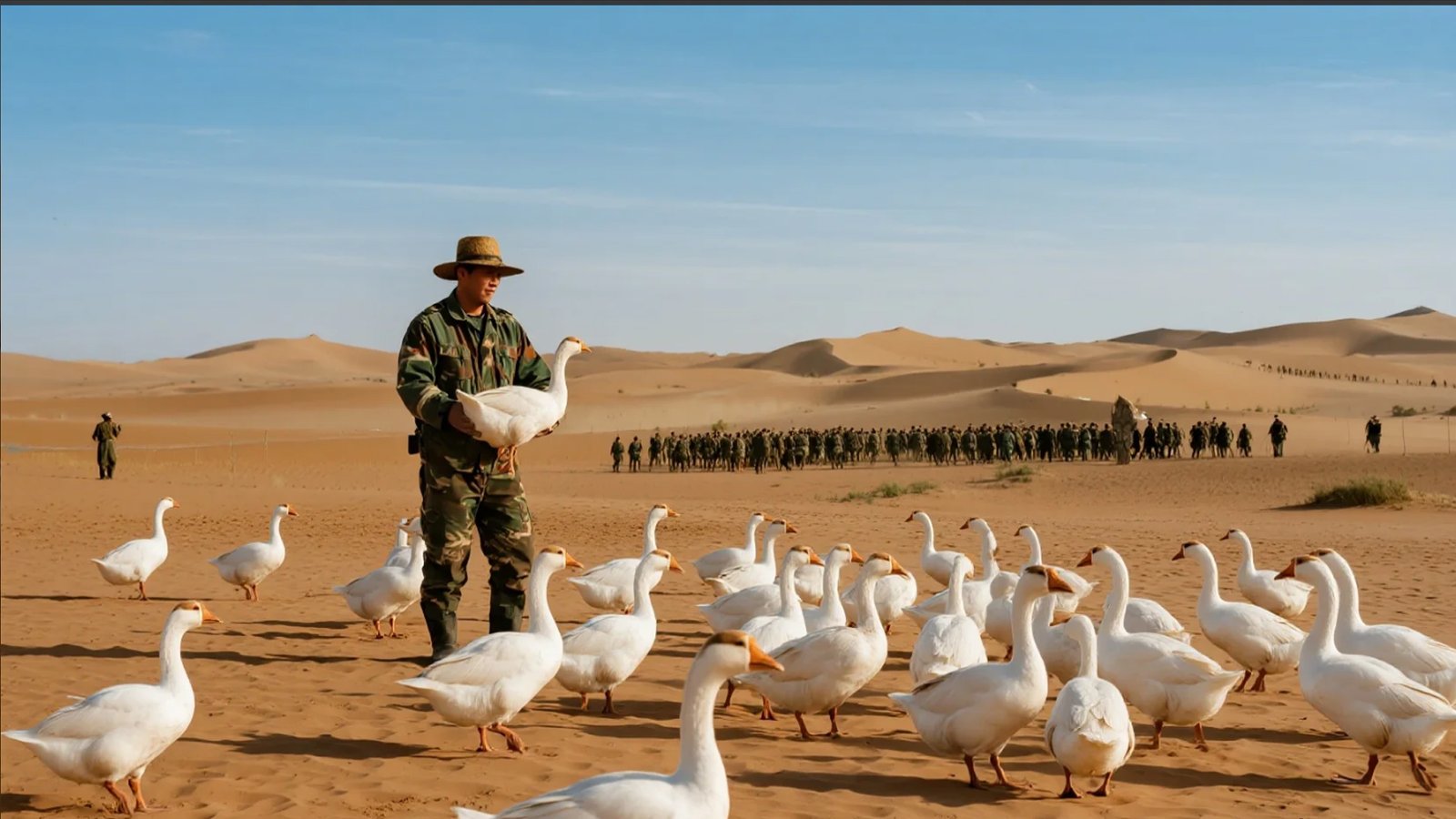A Devastating Locust Plague In May 2022, a heatwave swept Xinjiang, China, pushing temperatures 1°C above normal. Consequently, this shift sparked an
A Devastating Locust Plague
In May 2022, a heatwave swept Xinjiang, China, pushing temperatures 1°C above normal. Consequently, this shift sparked an ecological crisis. Persistent drought and minimal rainfall created ideal conditions for locusts. As a result, swarms multiplied rapidly, darkening skies and stripping farmlands bare. Farmers tried pesticides, manual repulsion, and barriers, but these efforts failed. Thus, the Xinjiang Agricultural Research Institute urgently sought nationwide help to save their lands.
Zhejiang’s Bold Strategy
Among numerous proposals, Zhejiang Academy of Agricultural Sciences offered a daring solution: deploy ducks to eat locusts. Although foreign media called it “wildly imaginative,” solid science backed the plan. Research revealed one Cherry Valley duck consumes 200 locusts daily, matching 10 workers’ efficiency. Moreover, ducks accurately target pests, sparing crops, and function as “winged exterminators.”
The team selected ducks with astronaut-like precision. They chose ducks over three months old, weighing 3.5 pounds, with glossy feathers and beaks curved 15–20° for 30% better pecking. Within three days, handlers gathered 100,000 ducks at Hangzhou’s Xiaoshan Airport. They loaded them into ventilated, straw-lined cages and flew them on a cargo plane kept at 25°C. Veterinarians ensured the ducks’ health, and one handler remarked, “They ate quietly, sensing their big mission.”
The Ducks Charge In
At Urumqi’s Diwopu Airport, workers provided water and vitamin-rich feed. Then, trucks rushed the ducks to Karamay and Yili’s ravaged fields. When handlers opened the cages, 100,000 ducks flooded the desert, forming a white carpet. They devoured locusts swiftly, snatching them mid-flight and digging up eggs. Farmers watched in awe as ducks cleared paths through infested fields, leaving only footprints and shells.
To boost efficiency, experts divided fields into grids. Ducks advanced systematically, herding locusts into traps. A technician explained, “We let ducks eat in the east, pushing locusts west into another flock.” Data showed the ducks covered 100,000 acres daily, eliminating 6 billion locusts in a month. Consequently, pest density dropped to under 10 per square meter.
Surviving the Desert
The desert’s 50°C heat challenged the ducks. Therefore, workers built shade shelters with willow branches and tarps, placing ice water basins beneath. They mixed heat-relieving herbs into feed. As a result, ducks rested at midday and resumed work refreshed. The Chinese Academy of Sciences noted three advantages: First, ducks detect locusts’ chemicals, targeting adults. Second, lead ducks call others into a “funnel” formation, 47 times more efficient than humans. Third, their thick gizzards grind eggs and sand, digesting tough shells.
Economic and Ecological Wins
The operation saved millions. Pesticides would have cost 32 million yuan and polluted 22% of soil. Instead, the ducks cost 8.6 million yuan and produced 530 tons of organic meat. Farmers adopted ducks, creating new income. For example, Karamay’s Ma Xiulan raised 300 ducks that patrolled fields and laid eggs. A viral Douyin video showed a duck delicately removing aphids, earning 2.8 million likes. Now, each acre yields 1,800 yuan from eggs.
In Yili, businesses made air-dried “locust-feast duck” and egg sauce, even reaching Michelin-starred restaurants. Additionally, a duck-rice model produced pesticide-free rice at 49 yuan per jin, increasing 6,200 households’ incomes by 42,000 yuan yearly. Thus, the former disaster zone became an eco-agriculture hub.
A Targeted Solution
However, the duck strategy didn’t suit every crisis. In 2023, Pakistan’s locust plague spanned 220,000 km². Experts noted desert locusts fly 150 km daily, outpacing ducks. Deploying 5 million ducks would have needed 400 flights, costing too much. Instead, China used drones to spray Metarhizium fungus and released parasitic wasps, sparing local bees. Professor Zhang said, “Biological control requires tailored solutions. Xinjiang’s locusts fly low, suiting ducks, but Pakistan needed fungi.”
A Lasting Impact
Today, Yili’s goose-duck teams continue the mission. Geese guard while ducks eat, joined by lizards and hares. Farmers filmed ducks marching through poplar groves like a “desert ecological guard.” Consequently, the UN included the “China Duck Model” in global textbooks. This approach highlights Chinese wisdom in balancing nature, not dominating it. By respecting all life, it shows a path to sustainable progress.



COMMENTS